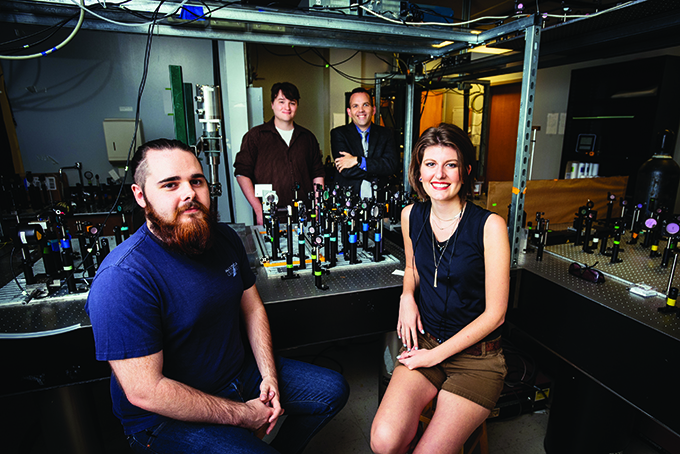
Celebrated American author and humorist James Thurber was known to worry about electricity dripping from the outlets in cartoons he created for The New Yorker magazine.
Turns out he wasn’t completely off base. Significant electrical power is lost before it ever gets from generating plants to homes, due to resistance of the copper and aluminum wires used to deliver it, according to David Hilton, Ph.D., associate professor in the UAB College of Arts and Sciences.
Hilton and his colleagues at the University of Alabama at Birmingham Department of Physics recently won a $635,964 grant from the U.S. Department of Energy to continue research aimed at solving the problem.
The research points to using experimental superconductor materials to transport energy. “In theory, if we could replace copper cables with a superconducting material that has no resistance, we could better harness the power already being generated,” Hilton says. “While these materials exist, there are a lot of technological barriers to using them like this.”
The downside of superconductors, which have been around for nearly 100 years, is that they require extremely cold temperatures to work.
“In our work, we are going to study a class of iron-based superconductors that were discovered about a decade ago,” Hilton says. “These would be easier to use in commercial applications, but there is still a lot of work to be done before that can happen.”
More cost-efficient superconducting magnets could bring down medical costs for such things as MRI machines that diagnose patients.
“The problem is that we have a poor fundamental understanding of why these materials are superconductors and how they work at such vastly different temperatures,” Hilton says. “Our work will be a series of experiments and computer simulations that try to explain what is happening and how we can use laser light to manipulate them.”
Working with Hilton are UAB graduate students Ashlyn Burch, Andrew Pope and Tracy Hastings, alongside the theoretical research group of Ilias Perakis, chair of the UAB Department of Physics.



